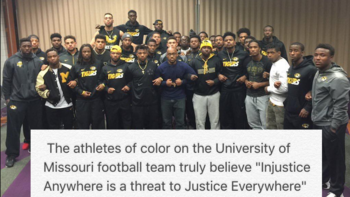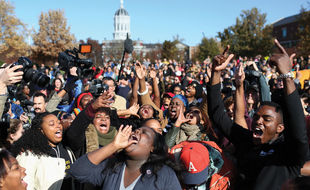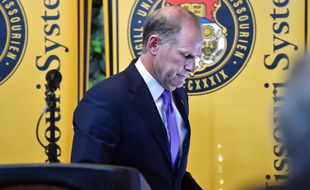The University of Missouri’s racist incidents are nothing new. According to the Los Angeles Times, two white students spread white cotton balls on the lawn of the black culture center in 2010 and Kim English former basketball player at the university tweeted about the racist history at Mizzou.
Other personal statements from a student and a teacher help us understand the strong tensions around race and diversity that occurred at Mizzou before the 2015 protests.
Mizzou students celebrating their victory after Tim Wolfe's resignation.
On November 9, Mizzou’s head football coach Gary Pinkel declared on his Twitter that he supported the players who protested, showing them support calling the protest united. The athletes’ protest then became more official when the Missouri athletic department released a statement from the athletic director Mack Rhoades and head coach Pinkel announcing no practices would be held until graduate student Butler ate again, and thus until Wolfe resigned. In a statement, Jay Nixon, governor of Missouri, said the students’ concerned had to be addressed.
The protest received wide media coverage locally and across the country: CNN, The Wall Street Journal, Fox News are just a few examples. The protest aimed to address a major issue of racism and unequal treatment for students of color within the University of Missouri which had a total of 32,777 students in 2016.
The football team was successful in its protest: Tim Wolfe stepped down and Jonathan Butler ended his hunger strike. Although most students did not continue their activism against racism on a daily basis like Payton Head did, players are proud to have participated in this protest.
Tim Wolfe, former president of The University of Missouri



